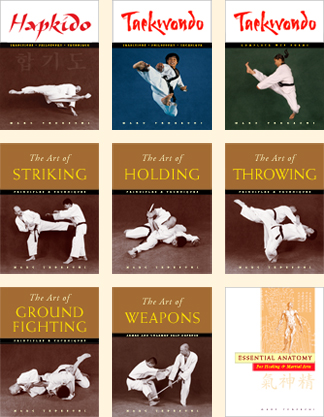FREQUENTLY ASKED QUESTIONS
ABOUT MARC TEDESCHI’S BOOKS
Below are answers to common questions concerning Marc Tedeschi’s books. Please note that many questions can be easily answered by reviewing the content on this website, which includes descriptions, reviews, excerpts, and samples of all works. If you have any further questions concerning these books, we suggest you view them at your local bookstore, or contact the publisher.
I live in a country where your books are not readily available in stores. How do I purchase them?
In one of several ways: 1) you can purchase books online from a variety of internet retailers, who will ship to virtually any location; 2) you can order books direct from the publisher, Shambhala (click on Contacts menu); or 3) you can special‑order books from your local bookstore, who will order from one of our international distributors (for contact info, click on the Contacts or Books menus).
Can I buy books direct from Marc Tedeschi or through this website, marctedeschi.com?
We do not sell books. Please, contact a retail bookseller, distributor, wholesaler, or the publisher. Links to major booksellers are given under the Books > Buy Books menu.
What are the similarities and differences between the 1136-page Hapkido book and the “Art of” series?
The information contained in The Art of Striking, The Art of Holding, The Art of Throwing, The Art of Ground Fighting, and The Art of Weapons is a reorganized and expanded version of material found in the 1136-page book, Hapkido: Traditions, Philosophy, Technique. Hapkido and the Art of series differ in the following ways:
• The Art of series shows techniques common to many martial arts. The Art of series does not show techniques unique to Hapkido.
• Most techniques in the Art of series are also found in the 1136-page Hapkido; however, they are organized differently. The techniques in Hapkido are organized by attack (e.g., defense against wrist grab). Techniques in the Art of series are organized by type (e.g., wrist locks, hip throws, etc.).
• The Art of series has larger photos than Hapkido.
• The Art of series has greater technical explanation in some cases, including additional closeup photos.
• The Art of series has a brief visual comparison of techniques from different martial arts. Hapkido does not.
• The Art of Holding and The Art of Throwing contain new chapters showing 40 advanced combinations and transitions (20 per book). Both books also contain text-tables listing additional combinations (70-plus in Throwing; 100-plus in Holding). This information is not found in Hapkido.
• The Art of Throwing shows common grips used in grappling. This information is not found in Hapkido.
• The Art of Weapons contains additional techniques added on to the end of the techniques found in Hapkido.
• In terms of number of techniques, Hapkido contains more techniques than all of the Art of books combined.
What is the difference between the large and small versions of the Hapkido and Taekwondo books?
The information in Hapkido: An Introduction to the Art of Self-Defense (128-page book) comes from material extracted from the author’s 1136-page work, Hapkido: Traditions, Philosophy, Technique. The information in Taekwondo: The Essential Introduction (128-page book) comes from material extracted from the author’s 896-page work, Taekwondo: Traditions, Philosophy, Technique. Generally, the smaller books are ideal for those who want a concise overview of these martial arts in their entirety, but do not require a large comprehensive text. For example: a novice taking up an art for the first time, or an experienced martial artist from another art, who wants to get an accurate sense of Hapkido or Taekwondo. Readers seeking a comprehensive presentation should obtain the larger books.







